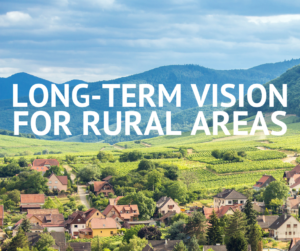In December 2021, the European Commission officially launched the EU Rural Pact of the Long-Term Vision for Rural Areas, an initiative whose purpose is to mobilise rural stakeholders, facilitate the exchange of experiences and boost rural revitalisation.
 The EU Long-Term Vision for Rural Areas, presented by the European Commission in June 2021, is structured around two main pillars:
The EU Long-Term Vision for Rural Areas, presented by the European Commission in June 2021, is structured around two main pillars:
- An EU Rural Action Plan combining a series of measures to make Europe’s rural areas stronger, greener, more resilient and connected. The measures announced include for example the creation of a “Rural revitalisation platform” and a new online one-stop shop for rural areas. Details of the measures and their timing can be found in our article on the Long-Term Vision for Rural Areas (for members only)
- An EU Rural Pact aiming at encouraging all rural stakeholders to take action, from national, regional and local authorities to associations and citizens. The EU Rural Pact intends to facilitate dialogue around replicable experiences to revitalise rural areas.
As such, the EU Rural Pact can thus be a tool to promote placed-based territorial approaches. It could encourage Member States to adopt rural agendas at national, regional, or local levels, as already done in France or Catalonia. However, the success of the Rural Pact relies on the capacity to mobilise the competent authorities at national, regional, and local level, as they are the ones who can take action for rural areas.
The European Commission launched an open invitation for all stakeholders interested in joining the EU Rural Pact. Authorities and all stakeholders can express their interest until June 2022 and join the Rural Pact community to share ideas on its implementation. In June 2022, the Rural Pact high-level conference will present these contributions and draw conclusions on the actions to take. Euromontana therefore encourages all mountain stakeholders, and in particular national, regional and local governments, to join the EU Rural Pact.
6 January 2022









